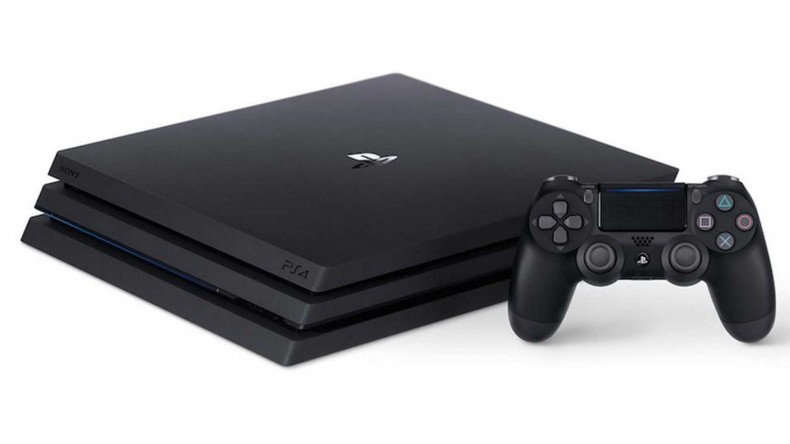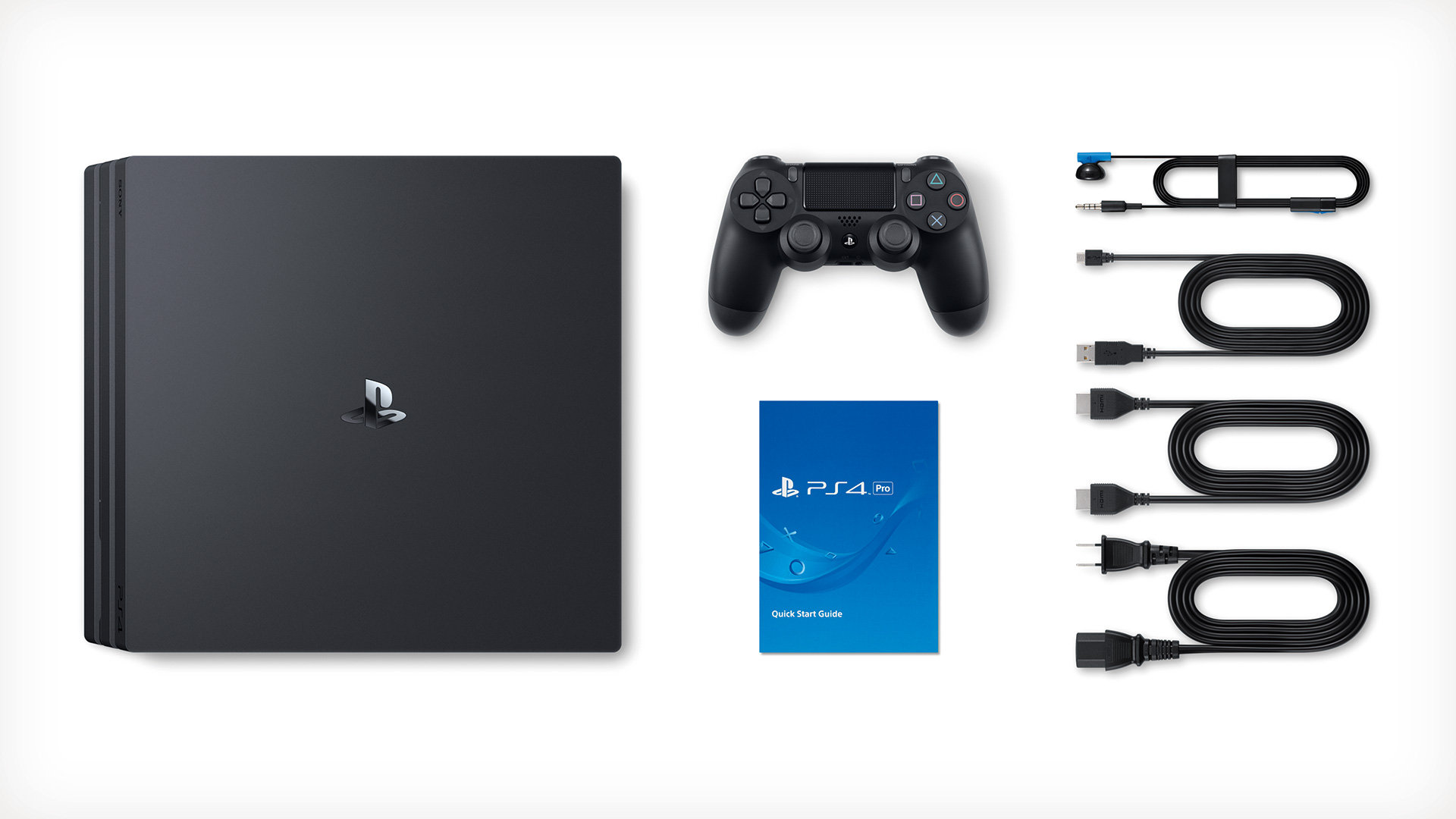November 10, 2016.
Sony’s latest and boldest PS4 iteration is a difficult proposition, because where Microsoft had a lot to do to improve the Xbox One, the popular opinion is that the PS4 kinda knocked it out of the park from day one, and has continued to deliver on a hardware front. But that’s slightly unfair, because the Xbox One S is a terrific console (and had we been sent one, we’d have reviewed that, too, before any fanboys start taking off their trousers), and a dramatic improvement to the old hardware, especially aesthetically.
This new hardware is heavy: seriously heavy. It’s about the size of the original PS4, only it looks like a sandwich. The USB port on the back is something I genuinely wanted, as I can’t stand having trailing wires out of the front, but otherwise, the initial takeaway is that the UI looks the same, the controller feels the same, so at first it’s slightly underwhelming. It’s a good thing then, that some of the games look truly astonishing at their best, and The Last of Us even runs at a native 4K resolution (don’t expect that to be a regular thing going forward).
Indeed, the position of the PS4 Pro is that it’s a high-end console. This is Sony’s cutting edge, the jump to a higher resolution; the want to make every game run better eventually, to make VR more enveloping: to just make everything better. Regardless of price, the simple answer is that Sony has delivered on its plans. The question that requires a longer answer, then, is, “Should I buy one?”, and, well, it’s complicated.
First things first, if you buy one without a 4K UHD TV, you’re going to get choices that are dependent on the developer and publisher – but it is vital that you understand this piece of information: unless the developer patches a game, unless support for the Pro is included with a game, you will see no changes. Sony has made sure that a PS4 game is a PS4 game, and Pro Support is an additional feature. For example, then, a patched Rise of the Tomb Raider on the Pro allows for a better frame rate or better visuals, but generally speaking the Pro can do all sorts of things that give you a better looking 1080p signal. Ultimately, the PS4 Pro will do one of a few things for a game, sometimes all of them, or maybe even two of the three – it’s game specific, and it varies greatly.
1. Add HDR, making the lighting look more natural and generally just better
2. Improve the frame rate
3. Display better textures in either 1080p, or 4K, or even just upscale using the onboard scaling techniques
Let’s address the HDR first, because it’s probably the biggest thing most people will notice, but it’s also something a normal PS4 (slim or original) has been upgraded to do. It’s phenomenal seeing a game with HDR turned on, and testing older titles like Infamous: First Light (which is a showpiece for HDR simply because the main character is all about that neon colour) allows the Pro to sing, giving visuals that make the game look new again, not that it’s old in the first place. The grunt of the Pro also allows for an unlocked frame-rate, which, although I didn’t complete the game, seemed well above 30fps, never coming back down. On top of that, you can lock the frame rate or choose speed over visual fidelity. This is a trade-off we’re going to have to get used to, going forward, and it means you can get a superb, high 60fps motion, with slightly lower textures. Regardless, turning HDR on and using the Pro’s power feels like delivering on a promise that this generation has thus far failed to do: deliver high quality, high frame rate visuals, with little compromise.
But I can’t show you HDR: nobody can. Don’t believe what you’re seeing unless it’s right in front of you. HDR is something you need to experience personally to decide if you want to get it in your life or not. HDR and 4K pretty much come hand in hand, so if you don’t have one, you’re unlikely to have the other. That said, 4K TVs (especially cheaper models) don’t always include HDR, and to get the absolute most out of the Pro (4K HDR) you’ll need to spend around £800 on a new TV. Sony aren’t pretending that 4K gaming is cheap, though, and the Pro has always been positioned as a high-end product.
It’s noticeable, though. Having recently played through Call of Duty: Infinite Warfare, booting up and starting over on Pro with 4K HDR visuals, the lighting is instantly brighter. Some spots are so visibly changed I couldn’t even see where I could before, such was the power of the reflecting fractal light-beams bouncing up from the icy floor. Likewise, Ratchet & Clank looks unbelievable on the Pro, more like a Pixar movie than a game, but offers little to no customisation: it’s just HDR on or off. The games play smoother, too, but it’s only the most discerning player that will notice. Games like Titanfall 2 use adaptive scaling, which means that during moments of heavy duress on the hardware, texture quality is lowered and raised on the fly. The power of the PS4 Pro means this doesn’t happen. Sure, it’s not going to match a PC running two high end 1080 NVIDIA GPUs, but it can’t be understated how impressive an output this is for a £349 console.
It pains me to be “that guy” and moan about this, because everyone knows it, but it is daft that the PS4 Pro doesn’t support Ultra HD Blu-Ray discs. Perhaps in countries with incredible internet, it’s not an issue, but I doubt I could even stream a 4K movie here, and in fairness I fully understand why it’s missing. Physical media is disappearing. Be honest with yourself, do you watch more Netflix (or similar), or do you put discs in to watch movies? No, it’s not okay, but if it’s a concession to get the box to this price, I’m just about okay with it, because I (personally) cannot remember the last time I put a movie in my disc tray. It’s even stranger if the stance is “stream stuff!”, because almost every UHD 4K TV will have Smart TV capabilities, meaning all those streaming services are native on the TV anyway.
What I can’t ignore, though, is the HDR stripping when using PSVR. Sony is pushing two devices this year: the new PS4, and their (excellent) VR device. The fact that one of those actually removes one of the selling points of the other is absurd, and smacks of development teams not talking to one another. It’s not something that can be fixed by a firmware update, either, so the only alternative is for you to have to switch HDMI cables between uses, or to hope the hardware giant offers a new breakout box for PSVR that you can freely exchange in the post. It’s daft, it’s annoying, and if you’re not lucky enough to work for a website that has multiple PS4 units to use, you’ll be pissed off about it.
One thing that (bizarrely) concerns me is the release date of the hardware. Sony has touted the thirty launch games for Pro, but it feels slightly irrelevant, and a little paradoxical. I find it hard to believe that someone willing to take the plunge on early adoption of 4K, HDR, and upgrading to a new PS4 will have missed all the games that are being patched. If you love games, and love PS4, surely you’ve played Uncharted 4, or The Last of Us? Yes, these games look at their best here, but do you want to play them again? More than that, though, is the increasingly vague manner in which publishers are informing us of patch notes. “4K Support” isn’t enough of a description – not when a lot more is happening than that. This isn’t Sony’s fault, of course, and there’s been an effort to ensure the PS4 remains “PS4” and there’s no split between iterations, but there needs to be a standard of patch notes held up here, and we need to know what we’re getting.
With Horizon: Zero Dawn and Days Gone certain to include support, it’s the future of the PS4 Pro that is exciting. Console generations have always boiled down to who can get the most power out of aging tech, and with the Pro, Sony has introduced an early refresh of the hardware, breathing new potential into the visual fidelity of these games. HDR and 4K allow upcoming and future titles to look their best, and honestly, at the price point, whatever magic Sony’s R&D teams have put into this box is a real achievement.
The PS4 Pro will be my PS4 going forward. Minor niggles like the fan noise being closer to that of the original console instead of the near silent Slim model are negated by positives like the return of the optical audio output. If nothing else, the potential to have consistently higher frame rates, gorgeous lighting, and generally better looking games is tantalising, just don’t go in expecting native 4K. While it’s possible, it’s very, very hard. High end PCs struggle with 4K/60fps, and it seems (for now, and for a while) that console gaming is always going to require a choice between 4K or 60fps, but for the first time, like PC gamers, we have a choice about how our games look and run, and that definitely makes it worth it. One way or another, this it the most powerful console on the market, and the best you can buy. Sony’s PS4 just got even better.
HDR is stunning
Improvements to 1080p gaming
Finally some choice on consoles
Optical output returns
No Ultra HD Blu-Ray support
HDR and PSVR don't play together
Fan noise closer to the original console than the slim
For the first time, console gamers have a choice about how games look and run, and that definitely makes it worth it. One way or another, this it the most powerful console on the market, and Sony's PS4 just got even better.









